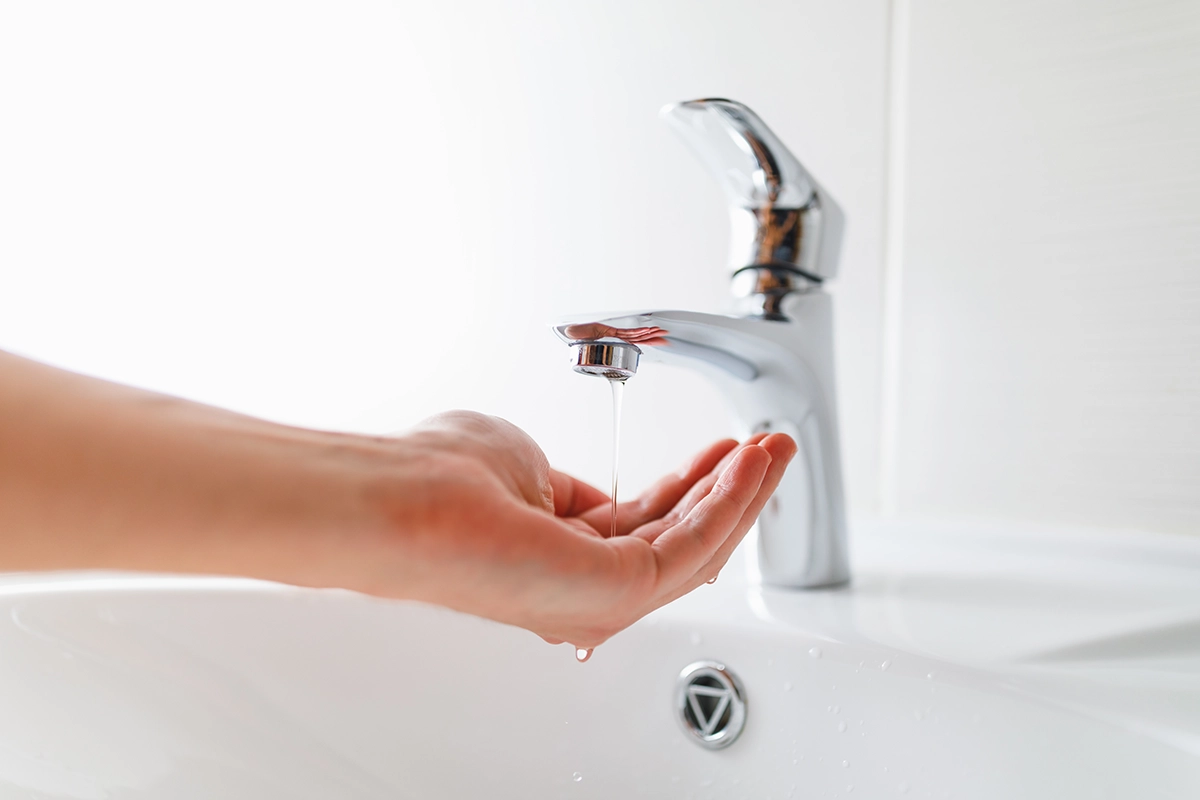Dealing with low water pressure in house plumbing can be more than just an inconvenience—it can signal underlying issues within your home’s plumbing system. Whether it’s a slow-flowing shower or weak water pressure in the kitchen sink, homeowners in Snellville, GA often encounter this frustrating problem. At True Blue Plumbing, we help residents identify the cause and restore strong, reliable water flow quickly and efficiently. But first, let’s break down the most common causes.
Clogged Pipes Often Lead to Low Water Pressure in House Plumbing
One of the leading culprits behind low water pressure in house plumbing is clogged pipes. Over time, mineral deposits, rust, and sediment can accumulate inside your plumbing system, narrowing the space water has to travel. As a result, pressure drops significantly—especially at fixtures located far from the water source.
This issue is more common in older homes, particularly those with galvanized steel pipes. If your water pressure has decreased gradually, and no other cause is apparent, clogged pipes are a strong possibility.
Hidden Leaks Can Create Serious Pressure Problems
Another major reason for low water pressure in house systems is hidden leaks. Even small, unseen leaks in your walls, ceilings, or foundation can redirect water away from your fixtures. While you may not see the leak directly, signs like water stains, mildew smells, or unusually high water bills can offer clues.
Because leaks can also cause structural damage, it’s crucial to act quickly. The experts at True Blue Plumbing can perform pressure tests and thermal inspections to locate and repair hidden leaks before they get worse.
Failing Pressure Regulators Can Disrupt Water Flow
Some homes are equipped with pressure regulators, which are designed to maintain safe water pressure levels. However, when these devices malfunction, they often cause widespread low water pressure in house plumbing systems. A faulty regulator may not allow enough water to flow through your pipes, especially during peak usage hours.
The good news? Replacing a pressure regulator is a straightforward task for a licensed plumber. At True Blue Plumbing, we can inspect your regulator and install a new one quickly if it’s not working properly.
Municipal Supply Issues Could Be the Source
While many water pressure problems originate inside the home, some start at the municipal level. If your city or county is conducting maintenance, responding to a main line break, or dealing with unusually high demand, it could result in low water pressure in house neighborhoods across Snellville.
To check if this is the case, ask your neighbors if they’re experiencing similar issues. If they are, the problem likely lies with the city. If not, it’s time to call in a local professional to inspect your home’s plumbing.
Valve Issues Can Affect Entire Systems
Before jumping to conclusions, it’s wise to check your home’s water shut-off valve and your water meter valve. If either one is partially closed—even slightly—it can restrict the amount of water entering your system, resulting in low water pressure in house lines.
It’s surprisingly easy for a valve to be bumped during home repairs or inspections. True Blue Plumbing recommends ensuring both valves are fully open before exploring more complex solutions.
Water Heater Sediment Build-Up Reduces Pressure
If you’re noticing low pressure only when using hot water, the issue may be isolated to your water heater. Over time, sediment collects at the bottom of the tank and can block the outlet or reduce flow capacity. This can lead to low water pressure in house plumbing lines that draw from the hot water supply.
According to the U.S. Department of Energy, flushing your water heater at least once a year can help prevent sediment build-up and maintain proper water pressure. However, if sediment has already caused a partial blockage, a professional cleaning may be necessary to restore full pressure.
Corroded Pipes Shrink Water Flow
Older plumbing systems often contain metal pipes, such as copper or galvanized steel. These pipes can corrode from the inside out, gradually decreasing internal diameter and reducing water flow. This can cause chronic low water pressure in house plumbing without any external leaks or visible signs of damage.
Pipe corrosion is a serious issue that may require a repipe project, especially if multiple lines are affected. Our team at True Blue Plumbing offers full repiping services for homes in Snellville, ensuring lasting improvements in pressure and reliability.
Fixtures Themselves May Be the Problem
Not all pressure issues are caused by the plumbing system itself. Sometimes, it’s the faucet or showerhead that’s causing trouble. Fixtures can accumulate limescale or debris, especially in areas with hard water. If you’re only seeing low water pressure in house at one or two faucets, cleaning or replacing the fixtures could fix the issue.
Additionally, aerators (the mesh screens on faucets) often trap debris. Removing and rinsing them is a quick fix that many homeowners can do themselves.
Steps You Can Take Before Calling a Plumber
While some causes of low water pressure in house plumbing require professional repair, there are a few things you can try on your own:
-
Make sure all shut-off valves are fully open.
-
Clean aerators and showerheads.
-
Test if the issue is isolated to hot or cold water.
-
Check for visible signs of a leak.
-
Ask neighbors about city-wide water problems.
If these steps don’t resolve the issue, True Blue Plumbing is here to help.
Trust True Blue Plumbing for Reliable Solutions
When you’re facing low water pressure in house plumbing, don’t settle for temporary fixes or guesswork. Our team of licensed professionals has the tools and experience needed to identify the exact cause of the issue and recommend permanent solutions. We proudly serve homeowners throughout Snellville, GA with honest, transparent service and high-quality plumbing repairs.
Whether it’s a quick aerator cleaning or a complete pipe replacement, you can count on us to get the job done right. Contact True Blue Plumbing today to schedule a full inspection or emergency service—we’re ready to restore your water pressure and peace of mind.


